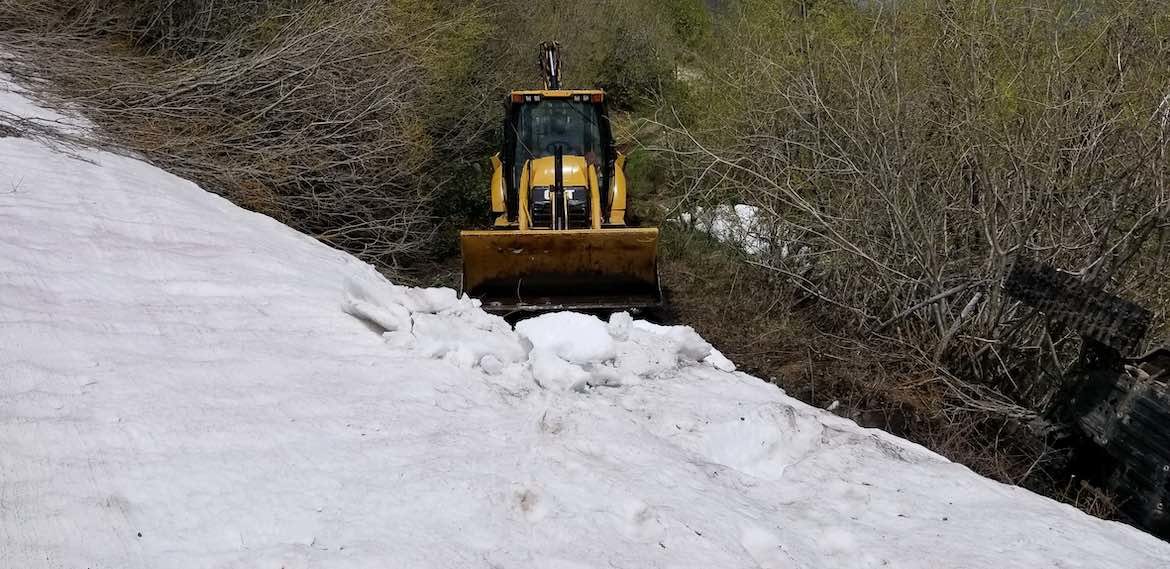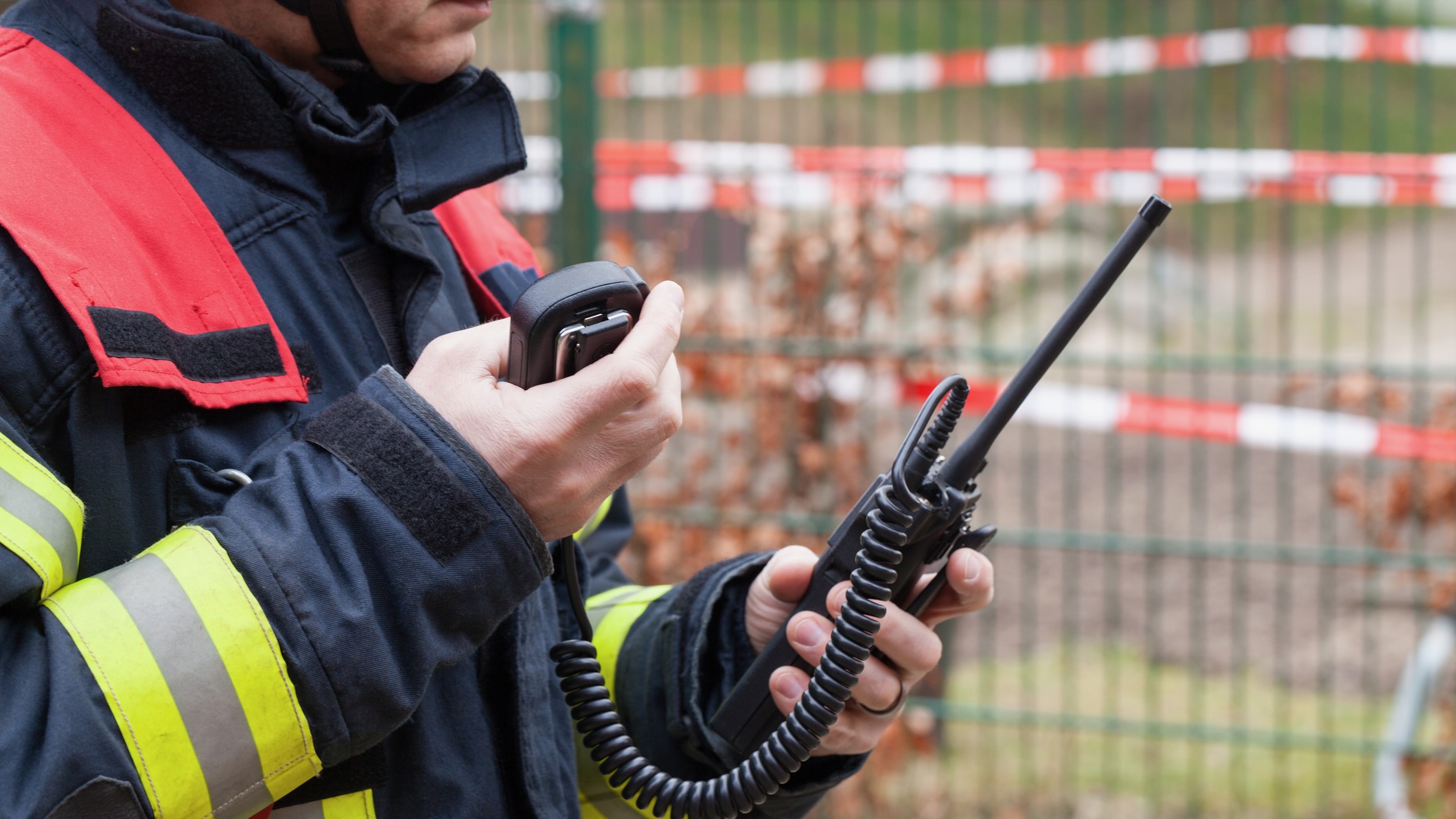Never-ending winter hampers conversion of TV translators

KUED
A front-loader operator tries to clear snow from a road leading to a KUED translator in Summit County, Utah.
The calendar says it’s summer, but engineers at several public TV stations in the Mountain West are still coping with wintry weather as they try to complete their pieces of the national conversion of translators to new channels.
Administered by PBS, the multibillion-dollar program is funded by T-Mobile, which has provided financial and engineering resources to help move thousands of translators from higher-UHF channels to clear spectrum for its own deployment of 5G mobile services.
While T-Mobile has already begun using that spectrum for 5G activation in some parts of the country, areas in Utah and Idaho have been challenging due to snow still falling on some mountaintops as late as mid-June.
“We had 58 feet of snow this winter out here — 700 inches,” said James Morgese, general manager of KUED in Salt Lake City. “There’s so much snow, it’s becoming difficult to meet T-Mobile’s expectations.”
KUED is managing the conversion for one of the largest translator networks in the country, with more than 500 signals bringing KUED and its Salt Lake commercial competitors to every corner of the state. While some signals were converted to lower channels last fall before snow began coming down, most of the translator sites are at high elevation on remote mountaintops, many still inaccessible under heavy snowpack.
At one such mountaintop in Summit County, Morgese says, a KUED engineer persuaded the county to send a front-end loader to try to clear snow from the access road to a translator site. After the engineer’s snowmobile rolled off the snowpack, county crews refused to continue clearing the heavy snow, leaving the site impossible to access.
Morgese said some mountaintop translators are being forced off the air as T-Mobile tries to meet tight deadlines to begin testing new 5G sites.
“They’re within their rights,” Morgese says of T-Mobile’s push to begin using the spectrum for which it paid billions of dollars at auction. “They have been working with us, but they have their orders, and 5G is important to them.”
These outages don’t affect the bulk of KUED’s viewership, who can watch the station via the main transmitter that serves Utah’s population base in and around Salt Lake City. But Morgese said viewers in more remote areas still depend heavily on over-the-air service from the translator network, where “we’re now experiencing outages every week.”
While KUED and the other Salt Lake stations remain available statewide on cable and satellite, Morgese estimates that 20–30% of viewers in his market still depend on over-the-air signals, leaving some without access to programming until the snow melts and roads are clear enough to allow engineers to reach sites and complete installation of new equipment.
Morgese said that as of Friday, only about 200 of the translators had been converted, leaving 300 more awaiting access. While he hopes that the process can be completed sometime in July, he warned that the weather could continue to cause problems in an area where reaching mountaintop transmitter sites is never easy.
“After all that snow melts,” he said, “then we’ll have the mud to contend with.”





